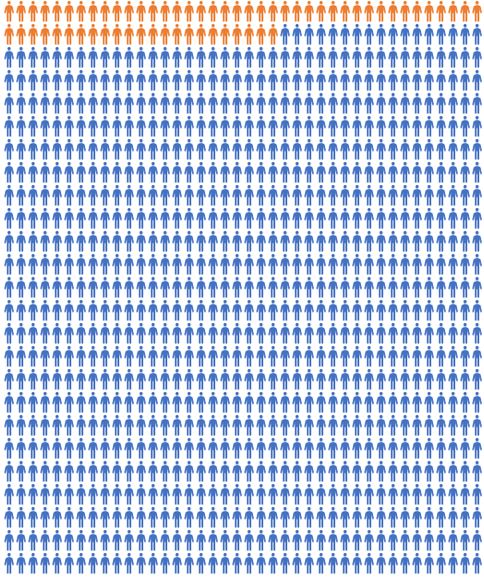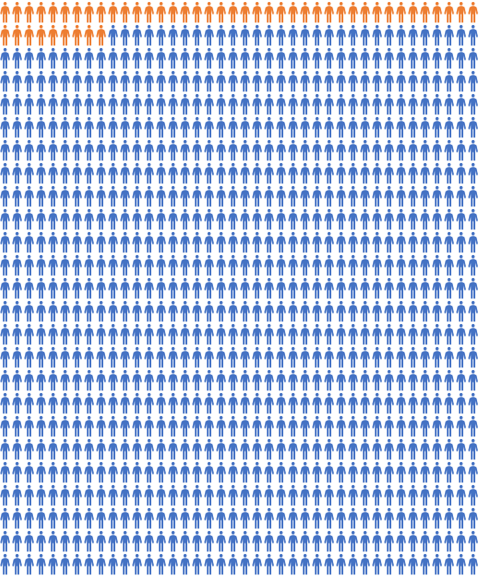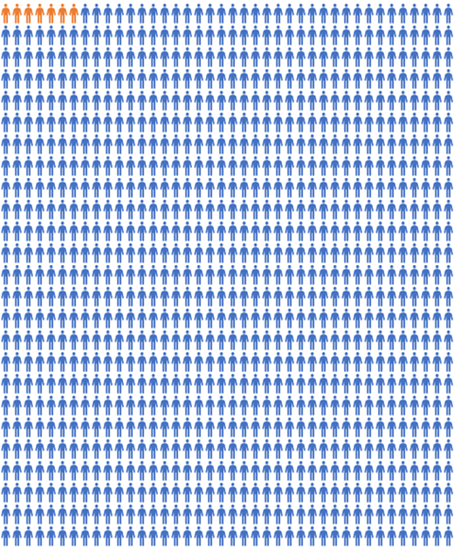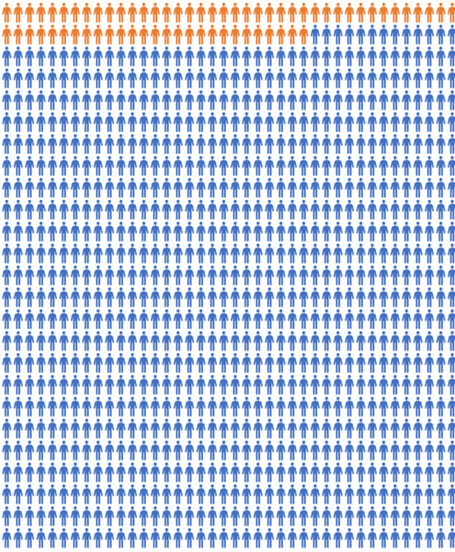Foodborne Illness Valuation Research
Generic Clearance for Survey Research Studies
Appendix 2. US Adult chronic survey
Foodborne Illness Valuation Research
OMB: 0536-0073
OMB Control Number: 0536-0073
Exp. Date: 04/30/2025
US Adult Chronic Foodborne Illness Outcomes Survey
Welcome
Thank you for your interest in this survey. This survey is about things you could do to reduce your chance of getting foodborne illness. It is being conducted by the U.S. Department of Agriculture in collaboration with Resources for the Future.
Please read all the information and answer the questions carefully. There are no right or wrong answers. Please respond as you would in real life. Background Information
Purpose of the survey
The purpose this survey is to help measure the benefit of programs that reduce foodborne illness risks.
USDA Burden Statement:
According to the Paperwork Reduction Act of 1995, an agency may not conduct or sponsor, and a person is not required to respond to, a collection of information unless it displays a valid OMB control number. The time to complete this survey is approximately 30 minutes.
Confidentiality of collected data
Your answers will be kept confidential.
We will not ask for your name or other personal identification information. To protect your privacy, we will assign your survey a random ID number that will not be linked to any information that would make it possible to identify you. Data will be password-protected, stored electronically on a secure server.
The information you provide will only be used for scientific research purposes. Only aggregate results will be reported. No individual responses will be identified in any reports.
Assurance of Confidentiality: The information you provide will be used for statistical purposes only. Your response will be kept confidential and any person who willfully discloses ANY identifiable information about you or your operation is subject to a jail term, a fine, or both. This survey is conducted in accordance with the Confidential Information Protection and Statistical Efficiency Act of 2018, Title III of Pub. L. No. 115-435, codified in 44 U.S.C. Ch. 35 and other applicable Federal laws.
Voluntary participation
Participation in this survey is voluntary. You can end the survey at any time by closing your browser window. If you do not complete the survey, none of your answers will be used in the analysis of survey responses.
Contact information
If you have questions regarding this survey, please contact Sandy Hoffmann at [email protected] or (202) 694-5354.
Informed consent
By this informed consent, you confirm that:
you are 18 years or older.
you are able to provide this consent.
you have read the information about the survey.
you are taking part in this survey by your own free will.
Proceed to Survey?
☐ Yes – I have read the information above and wish to take the survey.
☐ No – I do not wish to take this survey.
Initial background questions
In order to customize this survey, we need to ask a few questions.
Remember that your answers to all questions in this survey are confidential.
What sex were you assigned at birth, on your original birth certificate??
☐ Female
☐ Male
In what year were you born? __________________________
Foodborne illness background
This survey is about foodborne illness. These are illnesses caused by eating food that is contaminated with bacteria, viruses, or parasites. Foodborne illness is fairly common, even in the United States. CDC estimates that each year 1 in 6 Americans get sick from a foodborne illness.
Most cases are mild. Common symptoms include: diarrhea (runny stools), stomach cramps, vomiting, nausea, and/or fever. Symptoms usually last only a few days, but they can last longer, and you might need bed rest.
But some foodborne illnesses are bad enough to require hospitalization.
Your recent experience with foodborne illness symptoms
In the past year have you had an illness like any of those described below?
Check all that apply:
Diarrhea, stomach upset, and/or vomiting that lasted
☐ less than 1 day.
☐ 1-3 days and required time off from work or school. A doctor visit was not needed.
☐ 1-3 days and required time off from work or school. A doctor visit was needed.
☐ more than a few days and required hospitalization.
Foodborne illness background
This survey is about foodborne illness. These are illnesses caused by eating food that is contaminated with bacteria, viruses, or parasites. Foodborne illness is fairly common, even in the United States. CDC estimates that each year 1 in 6 Americans get sick from a foodborne illness.
Most cases are mild. Common symptoms include: diarrhea (runny stools), stomach cramps, vomiting, nausea, and/or fever. Symptoms usually last only a few days, but they can last longer, and you might need bed rest.
But some foodborne illnesses are bad enough to require hospitalization.
Your recent experience with foodborne illness symptoms
In the past year have you had an illness like any of those described below?
Check all that apply:
Diarrhea, stomach upset, and/or vomiting that lasted
☐ less than 1 day.
☐ 1-3 days and required time off from work or school. A doctor visit was not needed.
☐ 1-3 days and required time off from work or school. A doctor visit was needed.
☐ more than a few days and required hospitalization.
Complications and Long-term Outcomes
Although having a serious complication or long-term health problem after a foodborne infection is very rare, they do occur and can be very serious.
These include:Guillain-Barre Syndrome (GBS)
GBS occurs when the body’s immune system attacks part of the body’s nervous system. This can lead to muscle weakness, which results in symptoms that can include:
temporary paralysis of the legs, arms, or face
temporary paralysis of the respiratory system
blurred or double vision
difficulty speaking
difficulty chewing or swallowing, resulting in the need to be fed through a tube
difficulty with digestion or bladder control
fluctuations in heart rate or blood pressure
Irritable Bowel Syndrome (IBS)
IBS symptoms occur sporadically. These can include:
abdominal (gut) pain and cramping
a change in your bowel habits – such as diarrhea, constipation, or sometimes both
excessive gas
occasionally having an urgent need to go to the toilet
a feeling that you have not fully emptied your bowels after going to the toilet
passing mucus with your bowels
Reactive Arthritis
Inflammation from an infection can cause inflammation in your joints, the urinary system, and/or your eyes. This can cause:
joint pain and swelling – usually in the knees, feet or ankles
pain in your lower back and rump
swelling in your fingers and toes
joint stiffness – particularly in the morning
Pain or a burning sensation when you urinate
urinating more often than usual
having a sudden urge to urinate
a discharge of fluid from the penis or vagina
eye pain
swollen eye lids
Kidney Failure
The kidneys are essential to maintaining normal body function. They clean waste products from the blood. Some foodborne illnesses can lead to kidney failure or chronic kidney disease that can eventually cause kidney failure. When a person’s kidney’s permanently fail, they need dialysis or a kidney transplant to survive.
Meningitis
Meningitis is an inflammation of the lining of the brain or spinal cord. If not treated quickly it can lead to vision and/or hearing impairment, cognitive impairment, difficulty with balance or muscle coordination, or recurrent seizures.
Sepsis
Sepsis occurs when the body’s immune system goes into overdrive as it fights an infection and attacks the body’s own tissues and organs. It requires quick treatment, sometimes in ICU. Most people fully recover from sepsis. But it can take time. People who have had sepsis, particularly serious sepsis, may have symptoms for months or even years. These include: fatigue, difficulty sleeping, difficulty breathing, muscle and joint pain, decreased mental function, poor concentration, and emotional issues similar to PTSD.
Choices about long-term impacts
Not everyone will experience a long-term outcome if they have a foodborne illness, but everyone faces a chance that they will.
We want to focus on choices you could make to reduce the chance of experiencing a long-term health outcome from a foodborne infection.
Before going further, we need to talk about what we mean by chance (or risk) and the visual aids we’ll use in this survey to show how big the risk is.
Understanding risk (1)
A coin flip has an equal chance of coming up heads or tails, i.e., 1 in 2, or 50%

Understanding risk (2)
Imagine that you throw a die. The die has 6 sides, so the chances of getting any particular side will be 1 in 6.

Here is another way to see the chances of 1 in 6 -- a simple graph
|
|
|
|
|
|
Changes out of 100
In a similar way, we can show the chances out of 100 in a graph.
Suppose the chances of catching a common cold in a normal winter are 6 in 100. Here is how we would show those changes in a figure.
The picture below shows 100 people. The 6 figures colored orange represent those who will catch a cold next winter. The remaining blue figures (94) represent those who will not catch a cold next winter.
Chances of catching a common cold next winter 6 out of 100

Changes out of 1000
In a similar way, we can show the chances out of 1,000 in a figure.
For example, the chances of being injured in a car accident in the next 5 years is about 63 in 1,000. Here is how we would show that chance in a figure.
The picture below has 1,000 people. The 63 figures colored orange are those who are injured in a car accident over the next 5 years.
The remaining 937 figures colored blue represent those people who are not injured in a car accident over the next 5 years.

Chances of being injured in a car accident
63 out of 1,000
over 5 years

Comparing risks using these figures
Finally, we can compare two different risks using these figures. We will use figures like this later in the survey when we ask you to choose between actions to reduce health risks.
Suppose, for example, that you could reduce the chances of being injured in a car accident by doing things such as driving more slowly. If you were to do these things, your risk over five years of being injured would be lowered to 49 out of 1,000.
These two figures show the difference.
Chances of being injured in a car accident
63
out of 1,000 over
5 years
Figure A
Figure B



 igure
A shows a risk of 63 out of 1,000 (as before) while Figure B
shows a risk of 49 out of 1,000 over 5 years.
igure
A shows a risk of 63 out of 1,000 (as before) while Figure B
shows a risk of 49 out of 1,000 over 5 years.
Chances of being injured in a car accident if driving more slowly 49
out of 1,000 over
5 years
Which figure shows the lower risk of being injured in a car accident over 5 years?
☐ Figure A shows a lower risk of being injured.
☐ Figure B shows a lower risk of being injured.
Choices about long-term impacts
Suppose it were possible to reduce your risk of experiencing a long-term outcome when you get a foodborne illness, but this would come at a cost to you.
We want you to focus solely on avoiding the pain and suffering associated the long-term outcome.
Please assume that if you decide to do nothing and get sick with symptoms,
your medical costs would be covered,
you would not lose wages or other income due to the illness, and
you would have help to handle any other responsibilities while you’re sick.
Remember your budget!
Please treat the following questions as if they were a real-life situation, so that your answers are as accurate as possible.
Don’t agree to pay an amount that you cannot afford to pay or if you feel that there are more important ways to spend your money.
When answering the next questions, please keep in mind:
your income and savings
that the payment would reduce your ability to spend on other things you may value.
Choice 1 (the risk)
Imagine that you have to choose between two options:
Option A involves risk of a period of long-term illness caused by foodborne illness.
Option B avoids the risk of long-term illness caused by foodborne illness, but at a cost.
These figures represent the chances of experiencing Option A and Option B.
Option B
Option A

BB


Chances of having a long-term health outcome after foodborne illness
0 out of 1,000
Chances of having a long-term health outcome after foodborne illness
106 out of 1,000


Choice 1b (the choice)
We now want you to choose one of these two options:
Option A involves a period of illness caused by food poisoning with the stated duration.
Option B avoids the risk of long-term illness caused by foodborne illness, but at a cost.
If these were the only two options available to you, which would you choose?
|
|||||
Option
|
|
Option A. You get a short-term foodborne illness in the next 5 years and afterward experience a long-term health problem |
|
Option B. You get a short-term foodborne illness in the next 5 years, but do not experience a long-term health problem |
|
What you would experience |
|
You get a short-term foodborne illness. You seem to recover normally About a month later, you develop stomach cramps and severe constipation, and sometimes you experience an urgent need to go to the toilet. The symptoms go away but flare up again about every 2 months Following visit to your doctor and a hospital stay, you are diagnosed with Irritable Bowel Syndrome (IBS), a long-term outcome from your foodborne illness |
|
You get a short-term foodborne illness. You seem to recover normally.
You return to your normal state of health. |
|
Duration of the long-term illness |
|
6 years |
|
0 days |
|
Chance of experiencing the long-term illness after a short-term foodborne illness |
|
106 out of 1000 |
|
0 |
|
Preventive expenditure per year for next 5 years |
|
$0 ($0 over 5 years) |
|
$60 ($300 over 5 years) |
|
Which one would you choose? |
|
☐ |
|
☐ |
|
It’s possible that these preventive expenditures could be more (less) expensive. |
|||||
|
|
|
|
|
|
|
|
|
[If chosen] Would you change your choice if Option B cost: $30? ($150 over 5 years)
Yes/No |
|
[If chosen] Would you change your choice if Option B cost: $80? ($400 over 5 years)
|
Choice 2 (the risk)
Imagine that you can choose between two new options:
Option A involves risk of a period of long-term illness caused by foodborne illness.
Option B avoids the risk of long-term illness caused by foodborne illness, but at a cost.
These figures represent the chances of experiencing Option A and Option B.
Option A
Option B

BB


Chances of having a long-term health outcome after a foodborne illness
0 out of 1,000
Chances of having a long-term health outcome after a foodborne illness
7 out of 1,000


Choice 2b (the choice)
We now want you to choose one of these two options:
Option A involves a period of illness caused by food poisoning with the stated duration.
Option B avoids the risk of long-term illness caused by foodborne illness, but at a cost.
If these were the only two options available to you, which would you choose?
|
|||||||||||
Option
|
|
Option A. Current Risk You get a foodborne illness and afterward experience a long-term health outcome. |
|
Option B. Lower Risk You get a foodborne illness, but do not experience a long-term health-outcome. |
|
|
|||||
What you would experience |
|
You get a foodborne illness that results in more serious symptoms You have difficulty moving your legs and arms and find it hard to speak You are told you have Guillain-Barre Syndrome (GBS) which resulted from your body’s immune system attacking your nervous system You spend 3 weeks in the hospital The GBS damage is so severe that you lose use of your legs and are restricted to a wheelchair You are told you should expect to have long-term pain and tiredness |
|
You continue in your current state of health. |
|
|
|||||
Duration of long-term outcome |
|
5 years |
|
0 days |
|
|
|||||
Chance of experiencing this outcome in the next 5 years |
|
7 out of 1000 |
|
0 |
|
|
|||||
Extra expenditure per year for next 5 years |
|
$0 ($0 over 5 years) |
|
$100 ($500 over 5 years) |
|
|
|||||
Which one would you choose? |
|
☐ |
|
☐ |
|
|
|||||
It’s possible that these preventive expenditures could be more (less) expensive. |
|
||||||||||
|
|
|
|
|
|
||||||
|
|
|
[If chosen] Would you change your choice if Option B cost: $20 ($100 over 5 years)
Yes/No |
|
[If chosen] Would you change your choice if Option B cost: $150 ($750 over 5 years)
Yes/No |
||||||
An alternative way to rate illness severity
We’d like you to make a few more choices, but we’ll describe health outcomes using a system that’s widely used to rate the severity of illness. This will let the results of this survey be used for more illnesses.
This system uses a simple form, shown below.
First, we’d like you to use the form below to rate your current health.
Before you do so, think about your current state of physical and emotional health.
Remember, your name will not be recorded with your responses. Your information will be kept confidential.
Rating your current health
For each of the 5 aspects of health below, please check the ONE circle best describes how you are TODAY.
Mobility
☐ I have no problems in walking about
☐ I have some problems in walking about
☐ I am confined to bed
Self-Care
☐ I have no problems with self-care
☐ I have some problems with self-care
☐ I am unable to wash or dress myself
Usual Activities (e.g., work, study, housework, family, or leisure activities)
☐ I have no problems with performing my usual activities
☐ I have some problems with performing my usual activities
☐ I am unable to perform my usual activities
Pain/Discomfort
☐ I have no pain or discomfort
☐ I have moderate pain or discomfort
☐ I have extreme pain or discomfort
Anxiety/Depression
☐ I am not anxious or depressed
☐ I am moderately anxious or depressed
☐ I have extremely anxious or depressed
Choice 3 (the risk)
Imagine that you have two options:
Option A involves a period of long-term illness caused by a foodborne illness.
Option B involves a period of current health, but there is a cost to keeping your current health.
Option B
BB
Option A


Chances of having a long-term health outcome after a foodborne illness
0 out of 1,000


Choice 3b (the choice)
|
|
You become ill with food poisoning and afterward experience a long-term health outcome.
|
|
You become ill with food poisoning, but do not experience a long-term health-outcome. |
||||
What you would experience |
|
Mobility: I have some problems in moving around
Self-Care: Unable to wash or dress
Usual Activities: Some problems performing usual activities
Pain or Discomfort: Moderate pain or discomfort
Anxiety & Depression: I am not anxious or depressed
|
|
Mobility: your current level
Self-care: your current level
Usual activities: your current level
Pain or discomfort: your current level
Anxiety & depression: your current level |
||||
Duration of chronic illness |
|
10 years |
|
0 years |
||||
Chance of experiencing this outcome in the next 5 years |
|
31 out of 1000 |
|
0 |
||||
Extra expenditure each year for next 5 years |
|
$0 ($0 over 5 years) |
|
$220 ($1,100 over 5 years) |
||||
|
|
|
|
|
|
|||
Which one would you choose? |
|
☐ |
|
☐ |
||||
|
|
|
|
|
|
|||
|
[If chosen] Would you change your choice if Option B cost: $60? ($300 over 5 years)
Yes/No |
|
[If chosen] Would you change your choice if Option B cost: $250? ($1,250)
Yes/No |
|||||
Choice 4 (the risk)
Imagine that you have two options:
Option A involves a period of long-term illness caused by a foodborne illness.
Option B involves a period of current health, but there is a cost to keeping your current health.
These figures represent the chances posed in Option A and Option B.
Option A
Option B

BB


Chances of having a long-term health outcome after a foodborne illness
67 out of 1,000
Chances of having a long-term health outcome after a foodborne illness
0 out of 1,000


Choice 4b (the choice)
|
|
You become ill with food poisoning and afterward experience a long-term health outcome.
|
|
You become ill with food poisoning, but do not experience a long-term health-outcome. |
||||
What you would experience |
|
Mobility: I have some problems in moving around
Self-Care: I have some problems with self-care
Usual Activities: I am unable to perform my usual activities
Pain or Discomfort: Moderate pain or discomfort
Anxiety & Depression: I am not anxious or depressed
|
|
Mobility: your current level
Self-care: your current level
Usual activities: your current level
Pain or discomfort: your current level
Anxiety & depression: your current level |
||||
Duration of chronic illness |
|
10 years |
|
0 years |
||||
Chance of experiencing this outcome in the next 5 years |
|
67 out of 1000 |
|
0/1000 |
||||
Extra expenditure each year for next 5 years |
|
$0 ($0 over 5 years) |
|
$240 ($1200 over 5 years) |
||||
|
|
|
|
|
|
|||
Which one would you choose? |
|
☐ |
|
☐ |
||||
|
|
|
|
|
|
|||
|
[If chosen] Would you change your choice if Option B cost: $40 ($200 over 5 years)?
Yes/No |
|
[If chosen] Would you change your choice if Option B cost: $300 (1,5000 over 5 years)?
Yes/No |
|||||
Questions about your survey experience
We would like to ask you about your thoughts as you made your choices.
How much do you agree or disagree with the following statements?
1. I responded to the survey as I would have done in real life.

2. The survey provided me with enough information to make informed choices.

3. I am confident about my choices.

4. I would pay almost any amount to protect my health.

5. I made my choices as if my household would face the costs shown.

6. I made my choices knowing that if I agreed to pay, I would have less money to use for other things.

7. I had enough information to make these choices.

8. When I made my choice, I assumed my medical care costs would be covered.

9. When I made my choice, I assumed I would not lose any wages or other income because I was sick.

10. When I made my choice, I assumed other people would help to handle other responsibilities I have while I was sick.

11. When making my choices I considered changes in other health issues not described in the survey.

12. How would you describe your knowledge of the health impacts of foodborne illness before taking this survey?

13. How would you describe your knowledge of the health impacts of foodborne illness after taking this survey?

14. When making my choices I considered pain and suffering from the short-term illness as well as from the long-term illness would be like.

General health questions
Please remember that your answers to all questions will remain confidential.
1. In the past year do you believe you have had a foodborne illness?
☐ Yes
☐ No
2. To the best of your knowledge, have you ever had an infection that caused another health problem that lasted 6 months or more? These are sometimes called chronic impacts of an infections.
☐ Yes
☐ No
3. How would you describe your health in general?

4. How would you describe your health compared to others of your age and gender?

Other background questions
The survey is almost finished, we have just a few more questions.
1. If you need some form of medical treatment, who will normally cover the cost?
☐ Private health insurance (e.g., through your employer) would cover all or most of the costs
☐ A public health insurance program (e.g., Medicare or Medicaid) would cover all or most of the costs
☐ Private and public health insurance together would cover all or most of the costs
☐ I would have to cover most of the costs out of my own pocket
☐ Other
2. Select the type of area you live in (right click for more information):
☐ Urban
☐ Suburb
☐ Town
☐ Rural
[Right click: An urban area, or built-up area, is a human settlement with a high population density and infrastructure of built environment.]
[Right click: A suburban area is a mixed-use or residential area, existing either as part of a city or urban area or as a separate residential community within commuting distance of a city.]
[Right click: A town is a smaller population center that is not a suburb or a city]
[Right click: A rural area or countryside is a geographic area that is located outside towns and cities.]
Other background questions (2)
3. What is your current employment status?
Select only one
☐ Employed full-time
☐ Employed part-time
☐ Self employed
☐ Unemployed – looking for a job
☐ Unemployed – not looking for a job
☐ Full-time parent, homemaker
☐ Retired
☐ Student
☐ Other
4. Including yourself, how many people live in your household at present? Only count those who live permanently in your home and share common expenses.
☐ 1
☐ 2
☐ 3
☐ 4
☐ 5
☐ 6
☐ 7 or more
5. Do you have any children under the age of 18 living in your household?
☐ Yes
☐ No
If yes, are any of these children 5 or younger?
☐ Yes
☐ No
Other background questions (3)
6. What is your marital status?
☐ Never married
☐ Married
☐ Separated
☐ Divorced
☐ Widowed
7. Which of the following is the highest level of education you have completed?
☐ Some high school
☐ High school graduate or GED
☐ Some college or technical training, but no degree or certification received
☐ Associate degree, or technical or occupational certification
☐ Bachelor’s degree
☐ Graduate or professional degree
Other background questions (4)
8. What is your total annual household income (before taxes)?
Your total household income includes your own income plus the incomes of all household members who live together with you. Right click for more information.
{tab: The total income includes income from jobs, pensions, social security, interest, dividends, capital gains claimed, profits from businesses, unemployment payments, and all other money you received.}
Select only one
☐ Less than $15,000
☐ $15,001- $30,000
☐ $30,001-$50,000
☐ $50,001 - $70,000
☐ $70,001 - $100,000
☐ $100,001 - $140,000
☐ $140,001 - $200,000
☐ over $200,000
☐ Prefer not to answer
9. Do you identify as Hispanic or Latino?
☐ Yes
☐ No
10. Are you? (select all that apply)
☐ American Indian or Alaska Native ☐ White
☐ Asian ☐ Another race (Please specify: ________________)
☐ Black or African American ☐ Prefer not to answer
Thank you for completing this survey.
| File Type | application/vnd.openxmlformats-officedocument.wordprocessingml.document |
| Author | Hoffmann, Sandra A - REE-ERS, Washington, DC |
| File Modified | 0000-00-00 |
| File Created | 2023-11-08 |
© 2025 OMB.report | Privacy Policy